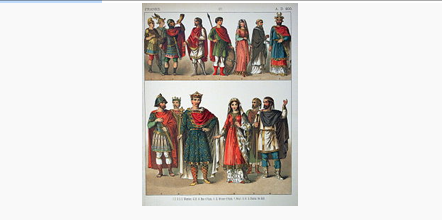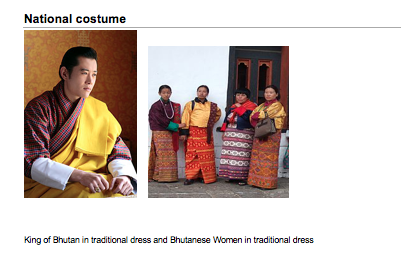Third Term Creative Art Lesson Note for JSS1
ACCESS ALL LESSON NOTES
ACCESS ALL QUESTIONS AND ANSWERS
ACCESS ALL WORKSHEETS
ACCESS ALL JOBS ACCESS
ACCESS WAEC QUESTIONS AND ANSWERS
SUBJECT; CULTURAL AND CREATIVE ARTS
SCHEME OF WORK
WEEK 1. COSTUME IN DRAMA.
‘’ 2. MOSAIC
‘’ 3. THEORY OF MUSIC
‘’ 4. INTRODUCTION TO CHOREOGRAPHY
‘’ 5. MAKE UPS IN DRAMA
‘’ 6-7. CONSEQUENCES OF USING FAKE AND ADULTRATED GOODS
‘’ 8. BEAD WORKS
‘’ 9. AFRICAN MUSICAL INSTRUMENTS.
‘’ 10. TIE – DYE.
‘’ 11. PLAYING OF MUSICAL INSTRUMENTS.
‘’ 12. REVITION AND EXAMINATION.
CLASS;J S S 1 WEEK 1 TOPIC; COSTUME IN DRAMA.
Costume

Costume is the distinctive style of dress of an individual or group that reflects their class, gender, profession, ethnicity, nationality, activity or epoch.
The term also was traditionally used to describe typical appropriate clothing for certain activities, such as riding costume, swimming costume, dance costume, and evening costume. Appropriate and acceptable costume is subject to changes in fashion and local cultural norms.
This general usage has gradually been replaced by the terms “dress”, “attire” or “wear” and usage of “costume” has become more limited to unusual or out-of-date clothing and to attire intended to evoke a change in identity, such as theatrical, Halloween, and mascot costumes.
Before the advent of ready-to-wear apparel, clothing was made by hand. When made for commercial sale it was made, as late as the beginning of the 20th century, by “costumiers”, often women who ran businesses that met the demand for complicated or intimate female costume, including millinery and corsetry.
Theatrical costume

“Costume” often refers to a particular style of clothing worn to portray the wearer as a character or type of character at a social event in a theatrical performance on the stage or in film or television. In combination with other aspects of stagecraft, theatrical costumes can help actors portray characters’ and their contexts as well as communicate information about the historical period/era, geographic location and time of day, season or weather of the theatrical performance. Some stylized theatrical costumes, such as Harlequin and Pantaloons in the Commedia dell’arte, exaggerate an aspect of a character.

National costume or regional costume expresses local (or exiled) identity and emphasizes a culture’s unique attributes. They are often a source of national pride. Examples include the Scottish kilt or Japanese kimono.
In Bhutan there is a traditional national dress prescribed for men and women, including the monarchy. These have been in vogue for thousands of years and have developed into a distinctive dress style. The dress worn by men is known as Gho which is a robe worn up to knee-length and is fastened at the waist by a band called the Kera. The front part of the dress which is formed like a pouch, in olden days was used to hold baskets of food and short dagger, but now it is used to keep cell phone, purse and the betel nut called Doma. The dress worn by women consist of three pieces known as Kira, Tego and Wonju. The long dress which extends up to the ankle is Kira. The jacket worn above this is Tego which is provided with Wonju, the inner jacket. However, while visiting the Dzong or monastery a long scarf or stoll, called Kabney is worn by men across the shoulder, in colours appropriate to their ranks. Women also wear scarfs or stolls called Rachus, made of raw silk with embroidery, over their shoulder but not indicative of their rank.
CLASS;JSS1 WEEK 2 TOPIC; MOSAIC.
Mosaic
Mosaic is the art of creating images with an assemblage of small pieces of colored glass, stone, or other materials. It is a technique of decorative art or interior decoration. Most mosaics are made of small, flat, roughly square, pieces of stone or glass of different colors, known as tesserae; but some, especially floor mosaics, may also be made of small rounded pieces of stone, and called “pebble mosaics”
Mosaic has a long history, starting in Mesopotamia in the 3rd millennium BC. Pebble mosaics were made in Tiryns in Mycenaean Greece; mosaics with patterns and pictures became widespread in classical times, both in Ancient Greece and Ancient Rome. Early Christian basilicas from the 4th century onwards were decorated with wall and ceiling mosaics. Mosaic art flourished in the Byzantine Empire from the 6th to the 15th centuries; that tradition was adopted by the Norman kingdom in Sicily in the 12th century, by eastern-influenced Venice, and among the Rus in Ukraine. Mosaic fell out of fashion in the Renaissance, though artists like Raphael continued to practice the old technique. Roman and Byzantine influence led Jews to decorate 5th and 6th century synagogues in the Middle East with floor mosaics.
Mosaic was widely used on religious buildings and palaces in early Islamic art, including Islam’s first great religious building, the Dome of the Rock in Jerusalem, and the Umayyad Mosque in Damascus. Mosaic went out of fashion in the Islamic world after the 8th century.
Greek and Roman.
Bronze age pebble mosaics have been found at Tiryns; mosaics of the 4th century BC are found in the Macedonian palace-city of Aegean, and the 4th-century BC mosaic of The Beauty of Durres discovered in Durres, Albania in 1916, is an early figural example; the Greek figural style was mostly formed in the 3rd century BC. Mythological subjects, or scenes of hunting or other pursuits of the wealthy, were popular as the Centre pieces of a larger geometric design, with strongly emphasized borders. Pliny the Elder mentions the artist Souses of Pergamum by name, describing his mosaics of the food left on a floor after a feast and of a group of doves drinking from a bowl. Both of these themes were widely copied.
Greek figural mosaics could have been copied or adapted paintings, a far more prestigious art form, and the style was enthusiastically adopted by the Romans so that large floor mosaics enriched the floors of Hellenistic villas and Roman dwellings from Britain to Dura-Europe. Most recorded names of Roman mosaic workers are Greek, suggesting they dominated high quality work across the empire; no doubt most ordinary craftsmen were slaves. Splendid mosaic floors are found in Roman villas across North Africa, in places such as Carthage, and can still be seen in the extensive collection in Bardo Museum in Tunis, Tunisia.
There were two main techniques in Greco-Roman mosaic: opus vermiculatum used tiny tesserae, typically cubes of 4 millimeters or less, and was produced in workshops in relatively small panels which were transported to the site glued to some temporary support. The tiny tesserae allowed very fine detail, and an approach to the illusionism of painting. Often small panels called emblematic were inserted into walls or as the highlights of larger floor-mosaics in coarser work. The normal technique was opus tessellatum, using larger tesserae, which was laid on site.[6] There was a distinct native Italian style using black on a white background, which was no doubt cheaper than fully coloured work.
Christian mosaic
Early Christian art
With the building of Christian basilicas in the late 4th century, wall and ceiling mosaics were adopted for Christian uses. The earliest examples of Christian basilicas have not survived, but the mosaics of Santa Constanza and Santa Pudenziana, both from the 4th century, still exist. The winemaking putti in the ambulatory of Santa Constanza still follow the classical tradition in that they represent the feast of Bacchus, which symbolizes transformation or change, and are thus appropriate for a mausoleum, the original function of this building. In another great Constantine basilica, the Church of the Nativity in Bethlehem the original mosaic floor with typical Roman geometric motifs is partially preserved. The so-called Tomb of the Julii, near the crypt beneath St Peter’s Basilica, is a 4th-century vaulted tomb with wall and ceiling mosaics that are given Christian interpretations. The Rotunda of Galerius in Thessaloniki, converted into a Christian church during the course of the 4th century, was embellished with very high artistic quality mosaics. Only fragments survive of the original decoration, especially a band depicting saints with hands raised in prayer, in front of complex architectural fantasies.
ACCESS ALL QUESTIONS AND ANSWERS
ACCESS WAEC QUESTIONS AND ANSWERS
TO GET YOUR COMPLETE LESSON NOTE AT AN AFFORDABLE PRICE, HIT THE WHATSAPP BUTTON BELOW
